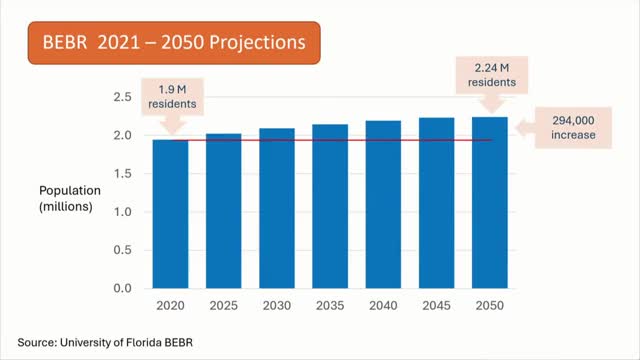Broward County tackles affordable housing crisis with bold strategies
November 01, 2024 | Broward County, Florida
This article was created by AI summarizing key points discussed. AI makes mistakes, so for full details and context, please refer to the video of the full meeting. Please report any errors so we can fix them. Report an error »

Broward County officials are preparing for significant population growth by 2050, anticipating an increase of between 294,000 to 600,000 residents. However, with much of the county already developed, discussions during a recent government meeting focused on maximizing existing land use and addressing critical issues such as affordable housing, climate change, and transportation.
A key point raised was that nearly 65% of Broward County's land is designated for residential use, with a substantial portion also set aside for conservation. This highlights the challenge of accommodating future residents while preserving natural resources. The meeting emphasized the need for a comprehensive approach to land use that includes redevelopment opportunities and the potential for increased density in residential areas.
The steering committee outlined several priorities for 2024, including the expansion of policies to support affordable housing. Proposed measures include revising density calculations for new constructions, allowing for shared living arrangements, and exploring the conversion of non-residential properties, such as offices and hotels, into residential units. These strategies aim to alleviate housing shortages and ensure long-term residents are not displaced by redevelopment.
Officials also discussed the importance of integrating climate resiliency into planning efforts, particularly in light of a new vulnerability study. This includes updating policies related to environmentally sensitive lands and considering additional incentives for developments that prioritize sustainability.
The meeting concluded with a consensus on the need for ongoing dialogue about affordable housing policies, including potential adjustments to impact fees and density caps. As Broward County navigates its growth, the focus remains on balancing development with community needs and environmental stewardship.
A key point raised was that nearly 65% of Broward County's land is designated for residential use, with a substantial portion also set aside for conservation. This highlights the challenge of accommodating future residents while preserving natural resources. The meeting emphasized the need for a comprehensive approach to land use that includes redevelopment opportunities and the potential for increased density in residential areas.
The steering committee outlined several priorities for 2024, including the expansion of policies to support affordable housing. Proposed measures include revising density calculations for new constructions, allowing for shared living arrangements, and exploring the conversion of non-residential properties, such as offices and hotels, into residential units. These strategies aim to alleviate housing shortages and ensure long-term residents are not displaced by redevelopment.
Officials also discussed the importance of integrating climate resiliency into planning efforts, particularly in light of a new vulnerability study. This includes updating policies related to environmentally sensitive lands and considering additional incentives for developments that prioritize sustainability.
The meeting concluded with a consensus on the need for ongoing dialogue about affordable housing policies, including potential adjustments to impact fees and density caps. As Broward County navigates its growth, the focus remains on balancing development with community needs and environmental stewardship.
View full meeting
This article is based on a recent meeting—watch the full video and explore the complete transcript for deeper insights into the discussion.
View full meeting